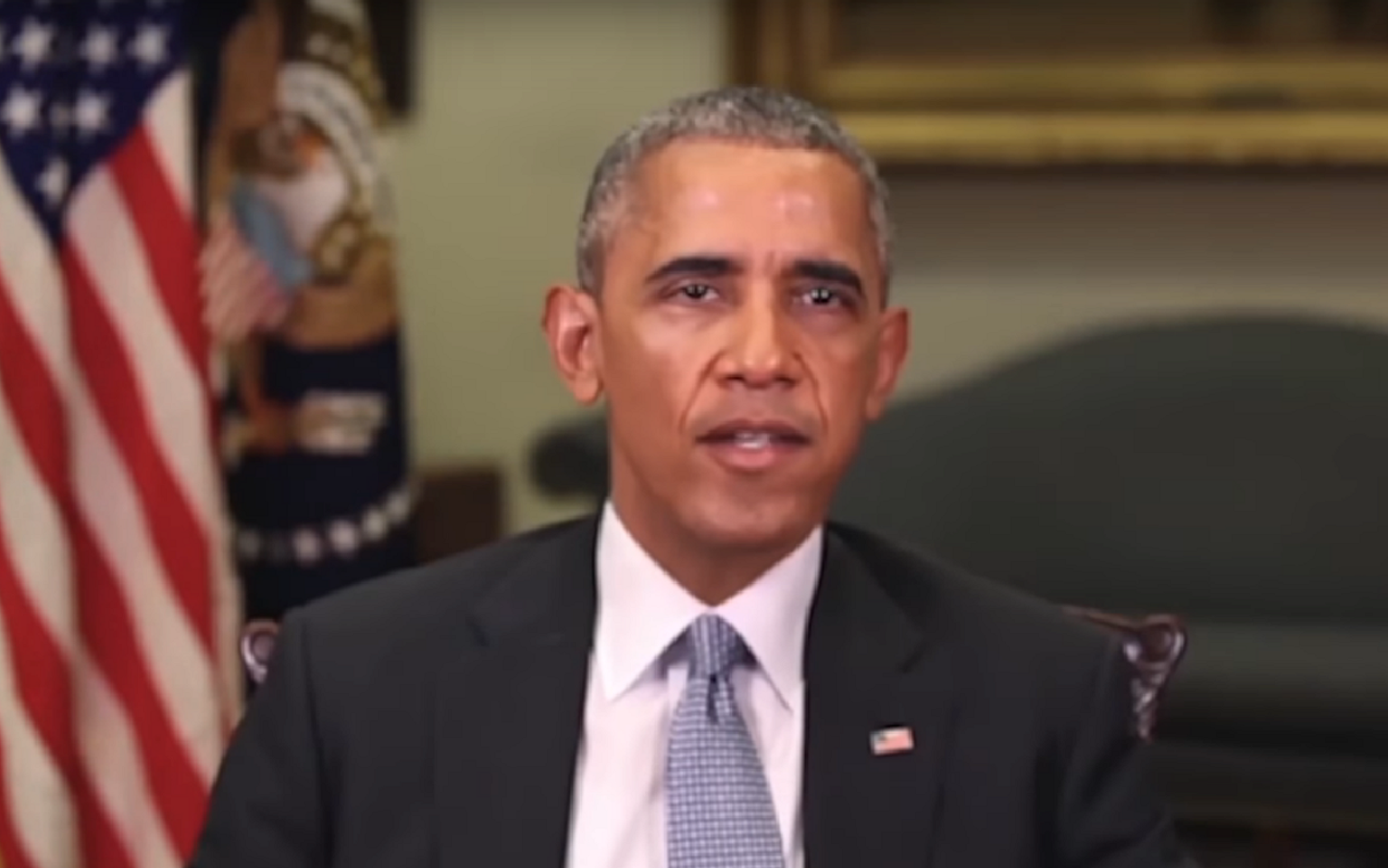What's a Deepfake? The Scariest Fake News, Explained
Move over, Fake News. Deepfakes can allow a fake video to be made of anyone, and it's potential is truly frightening.
Imagine you could make the President of the United States say whatever you wanted, no matter how incendiary or volatile, on video. That's the new normal, thanks to the frightening world of Deepfakes, a new AI-assisted technology that's becoming ever-more available.

Yesterday (April 17) BuzzFeed and actor/director/writer Jordan Peele (Get Out) demonstrated the dangerous potential of Deepfakes, with a video where a man who looks just like former President Barack Obama says the following: "So, for instance, they could have me say things like 'Killmonger was right' or 'Ben Carson is in the Sunken Place,' or 'President Trump is a total and complete dipshit.'"
The video then reveals Peele as the voice behind the faux-bama, and the two explain that "this is a dangerous time" and that "we need to be more vigilant about what we trust from the internet."
Because, think about it, imagine some troll decides to use Deepfake technology to create a video like this, and uses it to upset or enrage some world leader or person in a seat of great power. The results could be catastrophic.
How do Deepfakes work?
Deepfakes require little more than a mammoth set of images of an individual, which are then processed using artificial intelligence technologies such as machine learning. Soon after the concept came to fruition, a user-friendly app, simply called FakeApp, took those ideas and made them easier for your average troll-next-door to use.
For example, Jordan Peele's production company Monkeypaw Productions put the Obama video together using FakeApp and Adobe's popular After Effects program for graphics editing. BuzzFeed reports it took 56 hours of automatic processing, overseen by a video effects profesional, to get the video right.
The team started by pasting Peele's mouth into an original video of Obama. BuzzFeed's Craig Silverman reports that the video looked clumsy at first, but got "remarkably better" once FakeApp had time to mash the mouth and face together.
Get instant access to breaking news, the hottest reviews, great deals and helpful tips.
MORE: Alexa vs. Siri vs. Google Assistant: Which Smart Assistant Wins?
How can you avoid getting fooled by Deepfakes?
The bad news is that we're only in the infancy of Deepfakes, and the technology can only become more convincing as more and more people work on its improvement.
How fast is this technology moving? Deepfakes first gained popularity last December when a subreddit popped up to show how miscreants were using FakeAdd to swap celebrity faces into adult films. and a Motherboard report documented how one clip wasn't "going to fool anyone who looks closely. Sometimes the face doesn't track correctly and there's an uncanny valley effect at play, but at a glance it seems believable." Adobe's even been developing a "photoshop for audio" dubbed VoCo, but it may never see the light of day.
But back to the Deepfakes of today. If you squint closely at the mouth of Deepfake Obama, you can see a blurred area, that might remind Star Wars fans of how the mouth of Grand Moff Tarkin looked in the film Rogue One: A Star Wars Story, since the deceased actor Peter Cushing wasn't there, but reborn in CGI.
Aside from that blur, and Peele's voice not being Obama's, there's little in this video that signifies that it's a forgery (minus the confession at the end).
So, your best bet is to use an old bit of journalistic wisdom and "consider the source." Don't believe your eyes when you're watching social media. Rely less on short videos posted online, and more on the content from reliable publications like The New York Times.
As Peele and Obama say in the video, "It may sound basic, but how we move forward in the Age of Information is going to be the difference between whether we survive or whether we become some kind of f*cked up dystopia."

Henry was a managing editor at Tom’s Guide covering streaming media, laptops and all things Apple, reviewing devices and services for the past seven years. Prior to joining Tom's Guide, he reviewed software and hardware for TechRadar Pro, and interviewed artists for Patek Philippe International Magazine. He's also covered the wild world of professional wrestling for Cageside Seats, interviewing athletes and other industry veterans.
-
dohnmd Problem is NYT as well as other "dependable" news organizations have had their part of printing and voicing biased reporting. As soon as News organizations like CBS, NBC, ABC, WP etc, etc, return to respectability the better we'll all be. I'm just a person who wants the news reported and not opinion pieces constantly blasting at me. Give me the facts and I can make up my own mind. This technology (DeepFake) only becomes stronger at times like this. I don't need 24 hours of Smokey Daniels...Reply -
busabashi "President Trump is a complete and total <mod edit>"????????????? REALLY HENRY T. CASEY, TOM'S GUIDE, YOU TUBE????Reply
No bias here. If this "example" had called Obama a <mod edit> this story would never have run. -
johnisgro69 There are times when it does seem Mr. Trump is perhaps a clumsy with getting his agenda's in place but believe this point I'm about to make . He has done a far better job correcting all bad deals betweeen our nation and others. What I mean by that is example Japan who we protect and doesn't allow for free trade between our countries . Mexico who has sucking up all potential employment opportunities for average americans to earn a living and that by part is due CEO greed which is just rampant in this country . He's not eloquent but he's the pit bull we need to undo all the <mod edit> our prior presidents didn't bother to do.Reply
